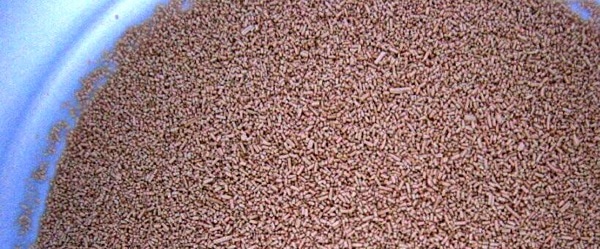If you are a Michelin star chef, then your first priority for preparing your signature dish is to use the best ingredients. One rotten potato or one slightly overripe strawberry could ruin not just a dish, but also your reputation. In the laboratory we are (mostly) not cooking rotten potatoes, but we are doing delicate and sensitive experiments that depend on quality ingredients.
Let’s talk about the quality of one the ingredient that is indispensable in molecular biology: proteins. Very often, when working with purified proteins, we overlook the preparatory phase. We think that handling protein is easy, especially compared to nucleic acids, and that any meticulous quality control is superfluous. However, if you use “bad” ingredients, you will not have just wasted reagents and time, but more importantly you will get unreliable, irreproducible, or ambiguous results from your experiments. For this reason, getting the best possible purified and characterized protein represents the “tipping point” in the line between their production and use.
What Do You Check When Doing Protein Quality Control?
Many factors influence protein quality—from details in the production and purification process to storing conditions and subsequent handling. Some factors we can control but many are beyond our influence, which makes quality control of the sample vital. To assess the quality of your purified protein, you should examine the following characteristics.
Concentration
Because most experiments directly depend on the amount of protein, concentration is a parameter every researcher must check regularly. Determining the protein concentration is usually done with UV-VIS spectrometry and Bradford, BCA, or Lowry assays. Regularly measuring the concentration is also a form of control for the purification process. For example, if your yields are inconsistent, then the protocol is likely not optimized.
The final protein concentration is influenced by a multitude of factors. If you isolate your protein from tissue or serum, you must consider the physiology or pathophysiology of the organism. More specifically, you should consider disease state, age, level of oxidative stress, and any possible post-translational modifications (PTMs) caused by disease that could affect your total protein yield. For example, certain PTMs might block the antibody that you typically use to immunoprecipitate your protein, thus lowering your yield. Also, conditions for the culture growth (i.e. temperature, pH, presence of ions, or antibiotics) can influence your final yield and should be carefully observed.
You should also be aware that storage conditions affect the concentration. This is especially important for samples with a concentration below 1mg/mL; low amounts of protein are at an increased risk of degradation with repeated freeze-thaw cycles.
Purity and Homogeneity
Despite efforts to avoid it, contamination is a reality of every lab environment. From sample-to-sample contamination, to air particles, data is at a constant risk of being skewed by foreign matter. Thus, by knowing the purity of your protein sample, you can detect possible contaminants interacting with your target molecule or with unwanted binding partners.
Proteins can also aggregate, oligomerize or otherwise interact with other macromolecules present in the sample. . While this aggregation is often not visible to the naked eye, the effects of these formations are clearly seen in your experimental results. Aggregation can decrease or destroy the activity of the protein, which hinders or abolishes its function in the experiment.
On the other hand, protein degradation (proteolysis) can also occur as a result of undesired enzymatic activity or uncontrolled storage conditions and will lead to sample contamination.
Electrophoresis (SDS-PAGE) can be used to check both the size of your protein and the purity of the sample. If it’s too large, then you may have issues with aggregation. Too small, then you may have protease in your sample degrading your protein. Too many bands in all sizes, and you may have a low purity sample. You can also use mass spectrometry (MS) to detect peptides that can be overlooked by SDS-PAGE. Additionally, protein aggregates can be detected via dynamic light scattering.
Protein Activity
During the process of purification, activity of the enzyme can be changed or even lost. Because of misfolding or the presence/absence of PTMs, not all purified proteins preserve their activity. Some percentage of your protein sample likely lacks its biological activity. Therefore, you must determine not just the total protein concentration but also the concentration of active protein.
Thermal Stability and Storage Conditions
Typically, aliquots of the whole sample are used in an experiment, leaving the rest to be stored. However, storage conditions can largely affect the protein stability and activity, making the preservation method vital to obtaining reproducible results.
Keep in mind that no single rule fits all proteins. While one protein can endure 4°C (provided the conditions are sterile), others may degrade. One may need the presence of a stabilizer to prevent unfolding (like EDTA). You must also consider the residual presence of some chemicals leftover from your starting material (e.g., EDTA, heparin, or citrate in solution if using plasma as a starting material).
As a general rule, you should keep samples at -70°C for long term storage and 4°C for short-term storage (24 hours or less). Nevertheless, some protein molecules (like antibodies) can survive short stays at room temperature.
Avoid excessive freezing because of complications arising from freeze-thaw cycle. Excessive freezing and subsequent thawing can cause little particles of ice to degrade your protein. Consider aliquoting or adding glycerol (as long as that won’t affect your protein activity) to your sample to minimize the effects of freeze-thaw cycles. Also, check that your freezers are all plugged into outlets that have access to emergency power in the event of unplanned electricity cuts.
Proteins like to adhere to “storageware.” For purified protein storage, autoclaved glassware and polypropylene tubes are recommended.
Finally, determining the condition (concentration, purity) of the product before and after the storage is one of the crucial elements of protein quality.
Other Biophysical and Structural Properties
To reach its full functionality, proteins undergo a series of post-translational modifications during synthesis. For instance, proteins can be glycosylated, phosphorylated, form disulfide bonds between different protein domains, and undergo lipidation.
Changes in PTMs affect protein structure by changing the isoelectric point (total protein charge affects solubility of the protein), secondary structure (mis-folding), and hydrophobicity (separation from water solution) which can all affect purification processes.
Techniques for Protein Quality Control
A range of biophysical techniques exist which can quantify changes in your sample. Putting results behind a “good” sample means that you can easily identify bad ones.
PTMs can be assessed by employing techniques such as surface plasmon resonance (SPR), circular dichroism (CD), nuclear magnetic resonance (NMR) differential scanning fluorimetry (DSF), isothermal titration calorimetry (ITC), thermophoresis, and chromatography. Each of these present their own technical requirements, in terms of sample volume or concentration, time and sensitivity.
Ideally a quality control check should be fast, simple to perform, and give clear results— making Microfluidic Diffusional Sizing (MDS) as employed in the Fluidity One benchtop instrument an ideal method. In under 10 minutes, the instrument reports hydrodynamic radius and concentration from a 5 µL aliquot of sample. These two parameters together give a good picture of sample quality – as misfolding, aggregation, degradation or heterogeneity can quickly be identified.
How Protein Quality Affects Downstream Applications
Protein analysis is a cornerstone of biology. So, quality control is of the utmost importance. Imagine that you treat your cell lines with the incorrect protein. Best case scenario: you do not prove the partner-binding specific mechanisms. Most likely scenario: you might trigger undesired changes in downstream signaling pathways, causing you days of frustration in interpreting the results. Also, if you express an enzyme in a stably-transfected cell line, which took you tons of hard work to create, you might want to check its activity before you blame the lack of results on the transfection and start over.
Mischaracterized or low-quality proteins could lead to unreliable, false or misleading results. So, don’t be in the dark—come clean with your sample.






